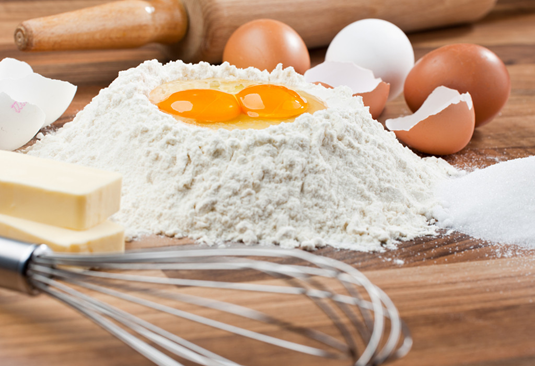Recipe balance in cakes
Release time:
2020-04-22
Cake ingredients mainly include eggs, sugar, and flour, with dairy products, leavening agents, and flavoring agents as auxiliary materials. Due to the differences in the processing properties of these raw materials, the ratio between various raw materials must also follow certain principles. This is the principle of raw material formula balance, including the balance between dry and wet raw materials, and the balance between strong and weak raw materials.

Cake ingredients primarily consist of eggs, sugar, and flour, with dairy products, leavening agents, and flavoring agents as secondary ingredients. Due to the varying processing properties of these ingredients, the ratio between them must adhere to certain principles, namely the principle of balanced ingredient formulation. This includes the balance between dry and wet ingredients, and between strong and weak ingredients.

Cake ingredients can be categorized based on their roles in cake processing:
(1) Dry ingredients: Flour, milk powder, leavening agents, cocoa powder, etc.;
(2) Wet ingredients: Eggs, milk, water, etc.;
(3) Strong ingredients: Flour, eggs, milk, etc.;
(4) Weak ingredients: Sugar, oil, leavening agents, emulsifiers, etc.
(A) Dry and Wet Ingredients
Cake formulations require a certain amount of wet ingredients to moisten the dry ingredients, creating a batter. For example, the flour in a cake recipe needs an approximately equal amount of egg liquid to moisten it, although this varies depending on the type of cake. Sponge cakes, primarily a foam system, can use slightly more water; while oil-based cakes, primarily an emulsion system, do not benefit from excessive water. The water content (as a percentage of flour) in cake recipes is as follows: sponge cakes use 100%-200% egg, equivalent to 75%-150% water. When the amount of eggs in a recipe is reduced, milk or water can be used to supplement the total liquid volume. However, it's important to note that the conversion between liquids is not an equal ratio. Reducing 1 part egg requires replacing it with 0.75 parts water or 0.86 parts milk, or a combination of milk and water in a specific ratio. This is because eggs are about 75% water, while milk is about 87.5% water. For example, when making a cocoa cake, the added cocoa powder can be considered a substitute for some of the flour in the original recipe. The amount added is generally no less than 4% of the flour. Since cocoa powder has stronger water absorption than flour, an equal amount of milk or an appropriate amount of water needs to be added to adjust the balance between dry and wet ingredients. An imbalance of dry and wet ingredients will affect the volume, appearance, and taste of the product. Too much wet material will create a "wet band" at the bottom of the cake, potentially causing part of the cake to collapse and reducing the volume. Insufficient wet material will result in a compact appearance and a rough, hard, and dry texture.

(B) Strong and Weak Ingredients
The main consideration for balancing strong and weak ingredients is the ratio of oil and sugar to flour. Different types of products use different amounts of oil and sugar. The basic ratio of oil and sugar (as a percentage of flour) for various main cake products is approximately as follows: Sponge cake: sugar 80%-110%, oil 5%-10%; Cream sponge cake: sugar 80%-110%, oil 10%-50%; Oil-based cake: sugar 25%-50%, oil 40%-70%. The principle for adjusting this balance is: when the amount of strong ingredients is increased, the amount of weak ingredients should be increased accordingly, and vice versa. For example, if the amount of oil in an oil-based cake recipe is increased, the amount of eggs should be increased accordingly to maintain balance while keeping the flour and sugar amounts constant. When the amount of eggs is increased, the amount of sugar should generally be increased accordingly. Cocoa powder and chocolate contain a certain amount of cocoa butter. Therefore, when adding these two ingredients, the amount of oil in the original recipe can be reduced appropriately. In addition, the balance between strong and weak ingredients can be adjusted by adding chemical leavening agents.
(C) High-Ratio Cakes
High-ratio cakes are high-sugar, high-liquid cakes. The amount of sugar and total liquid in the recipe often exceeds the amount of flour, reaching as high as 120%-140% (sugar) and 140%-160% (liquid) of the flour amount. In high-ratio cake recipes, excessive sugar increases the spreading effect on the product structure. This can be balanced by milk, which has a contracting effect. In addition, for excessive liquid, highly absorbent high-ratio flour and highly emulsifying high-ratio oil should be used.
Recommend News








